The Iceman's lithic toolkit: Raw material, technology, typology and use
- PMID: 29924811
- PMCID: PMC6010222
- DOI: 10.1371/journal.pone.0198292
The Iceman's lithic toolkit: Raw material, technology, typology and use
Abstract
The Tyrolean Iceman, a 5,300-year-old glacier mummy recovered at the Tisenjoch (South Tyrol, Italy) together with his clothes and personal equipment, represents a unique opportunity for prehistoric research. The present work examines the Iceman's tools which are made from chert or are related to chert working - dagger, two arrowheads, endscraper, borer, small flake and antler retoucher - and considers also the arrowhead still embedded in the shoulder of the mummy. The interdisciplinary results achieved by study of the lithic raw material, technology, use-wear analysis, CT analysis and typology all add new information to Ötzi's individual history and his last days, and allow insights into the way of life of Alpine Copper Age communities. The chert raw material of the small assemblage originates from at least three different areas of provenance in the Southalpine region. One, or possibly two, sources derive from outcrops in the Trentino, specifically the Non Valley. Such variability suggests an extensive provisioning network, not at all limited to the Lessini mountains, which was able to reach the local communities. The Iceman's toolkit displays typological characteristics of the Northern Italian tradition, but also comprises features typical of the Swiss Horgen culture, which will come as no surprise in the toolkit of a man who lived in a territory where transalpine contacts would have been of great importance. Ötzi was not a flintknapper, but he was able to resharpen his tools with a medium to good level of skill. Wear traces reveal that he was a right-hander. Most instruments in the toolkit had reached their final stage of usability, displaying extensive usage, mostly from plant working, resharpenings and breaks. Evidently Ötzi had not had any access to chert for quite some time, which must have been problematic during his last hectic days, preventing him from repairing and integrating his weapons, in particular his arrows. Freshly modified blade tools without any wear suggest planned work which he never carried out, possibly prevented by the events which made him return to the mountains where he was killed by a Southern Alpine archer.
Conflict of interest statement
The authors have declared that no competing interests exist.
Figures



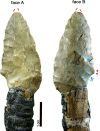



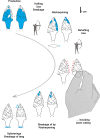



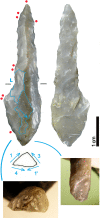

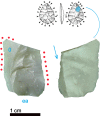



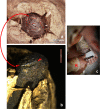
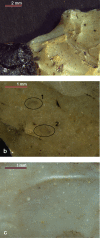

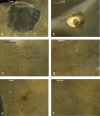

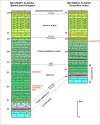




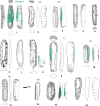

Similar articles
-
Otzi, the iceman and his leather clothes.Chimia (Aarau). 2010;64(5):315-20. doi: 10.2533/chimia.2010.315. Chimia (Aarau). 2010. PMID: 21138077
-
Possible evidence for care and treatment in the Tyrolean Iceman.Int J Paleopathol. 2019 Jun;25:110-117. doi: 10.1016/j.ijpp.2018.07.006. Epub 2018 Aug 8. Int J Paleopathol. 2019. PMID: 30098946
-
[The Iceman : Life scenarios and pathological findings from 30 years of research on the glacier mummy "Ötzi"].Pathologe. 2021 Sep;42(5):530-539. doi: 10.1007/s00292-021-00961-6. Epub 2021 Jul 8. Pathologe. 2021. PMID: 34240239 Review. German.
-
Long-distance connections in the Copper Age: New evidence from the Alpine Iceman's copper axe.PLoS One. 2017 Jul 5;12(7):e0179263. doi: 10.1371/journal.pone.0179263. eCollection 2017. PLoS One. 2017. PMID: 28678801 Free PMC article.
-
The Current Situation of the Tyrolean Iceman.Gerontology. 2019;65(6):699-706. doi: 10.1159/000501878. Epub 2019 Sep 10. Gerontology. 2019. PMID: 31505504 Review.
Cited by
-
Seventy-five mosses and liverworts found frozen with the late Neolithic Tyrolean Iceman: Origins, taphonomy and the Iceman's last journey.PLoS One. 2019 Oct 30;14(10):e0223752. doi: 10.1371/journal.pone.0223752. eCollection 2019. PLoS One. 2019. PMID: 31665165 Free PMC article.
References
-
- Höpfel F, Platzer W, Spindler K. Editors. Der Mann im Eis. Band 1. Bericht über das Internationale Symposium, Innsbruck 1992. Veröffentlichungen der Universität Innsbruck 187; 1992.
-
- Spindler K. Rastbichler Zissernigg E. Wilfing D. zur Nedden D. Nothdurfter H, editors. Der Mann im Eis 2 The Man in the Ice 2. Neue Funde und Ergebnisse. Wien-New York: Forschungsinstitut für Alpine Vorzeit der Universität Innsbruck; 2; 1995.
-
- Spindler K, Wilfing D, Rastbichler Zissernigg E, zur Nedden D, Nothdurfter H, editors. The Man in the Ice 3 Human Mummies. A Global Survey of their Status and Techniques of Conservation. Wien-New York: Forschungsinstitut für Alpine Vorzeit der Universität Innsbruck; 3; 1996.
-
- Südtiroler Archäologiemuseum, editor. Die Gletschermumie aus der Kupferzeit. Neue Forschungsergebnisse zum Mann aus dem Eis Schriften des Südtiroler Archäologiemuseums 1. Bozen–Wien: Folio; 1999.
-
- Bortenschlager S, Oeggl K, editors. The Iceman and his Natural Environment Paleobotanical results. The Man in the Ice 4. Wien: Springer; 2000.
Publication types
MeSH terms
LinkOut - more resources
Full Text Sources
Other Literature Sources

